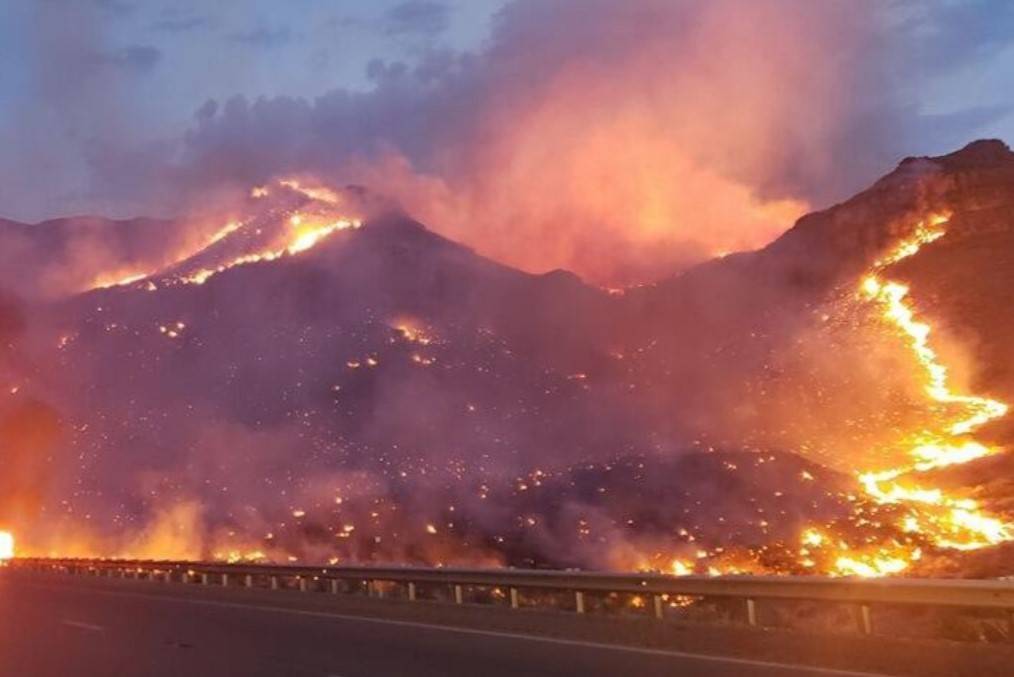
The Nevada Division of Environmental Protection and the Desert Research Institute announced a new partnership program that will expand infrastructure for wildfire smoke air quality monitoring and public information resources for rural Nevada.
The new Nevada rural air quality monitoring and messaging program will include the installation of approximately 60 smart technology air quality sensors that measure fine particulate pollution, the major harmful pollutant in smoke. Additionally, the new programs will bring additional communications tools to help rural Nevadans near the front lines better understand risks from wildfire smoke and what they can do to protect their health.
“The growing impacts of climate change are being felt in all corners of Nevada, with record-breaking temperatures and extreme drought fueling catastrophic wildfires across the West,” said NDEP Administrator Greg Lovato. “In recent years, smoke pollution from increasingly frequent, intense, and widespread wildfires have led to some of the worst air quality conditions in Nevada’s history, and these trends are expected to continue.”
The program is being funded through a $550,000 grant from the U.S. Environmental Protection Agency.
NDEP has worked to increase air quality monitoring due to the uptick in wildfires and increasing worsening air quality conditions.
“Given these concerns, over the past three years, the Nevada Division of Environmental Protection has moved quickly to expand and enhance our air quality monitoring network to rural communities throughout the state with new Purple Air sensors deployed in Elko, Spring Creek, Pershing County, Mineral County, and Storey County,” Lovato said.
Lovato also said that this new partnership will help build on the agency’s “goal of providing all Nevadans, in every community, with timely access to air quality information. I thank EPA and DRI for their active collaboration and support as we work together to harness the power of data and technology to bring localized air quality information to the doorsteps of rural Nevada communities.”
What does the program do?
The program applies various methods of air quality monitoring and communicating information. This includes evaluating the performance of selected portable air quality sensors in the DRI combustion facility and in Pershing, Storey and Elko counties, identifying gaps in public knowledge of wildfire smoke risk in the three counties and developing education materials for emergency managers to use to close those gaps.
Based on the needs of individual communities, the methods will be continuously monitored and tailored.
“We are excited to work collaboratively with NDEP and rural county emergency managers to expand the air quality monitoring network in Nevada and to develop custom messaging materials for communities frequently impacted by wildfire smoke,” said DRI Assistant Research Professor Kristin VanderMolen. “Together, this will enable emergency managers to make important safety decisions based on accurate, real-time, local-level air quality data, and to ensure that those communities are well informed about potential health risks and how to mitigate them.”
Deborah Jordan, EPA’s acting regional administrator for the Pacific Southwest office, said, “Wildfire smoke is a significant threat to public health during fire season. This research on air quality sensors and purifiers will improve approaches for evaluating wildfire smoke and mitigating the associated health risks in northern Nevada.”
According to the 2020 State Climate Strategy Survey, Nevadans ranked wildfire, drought, and air quality as the top concerns facing the state. By implementing these measures, NDEP and DRI expect to help address these concerns and see a healthier, safer rural Nevada that is better equipped with communications resources needed to successfully minimize the health risks of wildfire smoke.
These improvements are also aligned with the EPA Strategic Plan goal to connect state research needs with EPA priorities. Specifically, the development and assessment of the effectiveness of health risk communication strategies in supporting actions to reduce wildland fire smoke exposure among at-risk and harder-to-reach populations.
For more, head to https://ndep.nv.gov/air